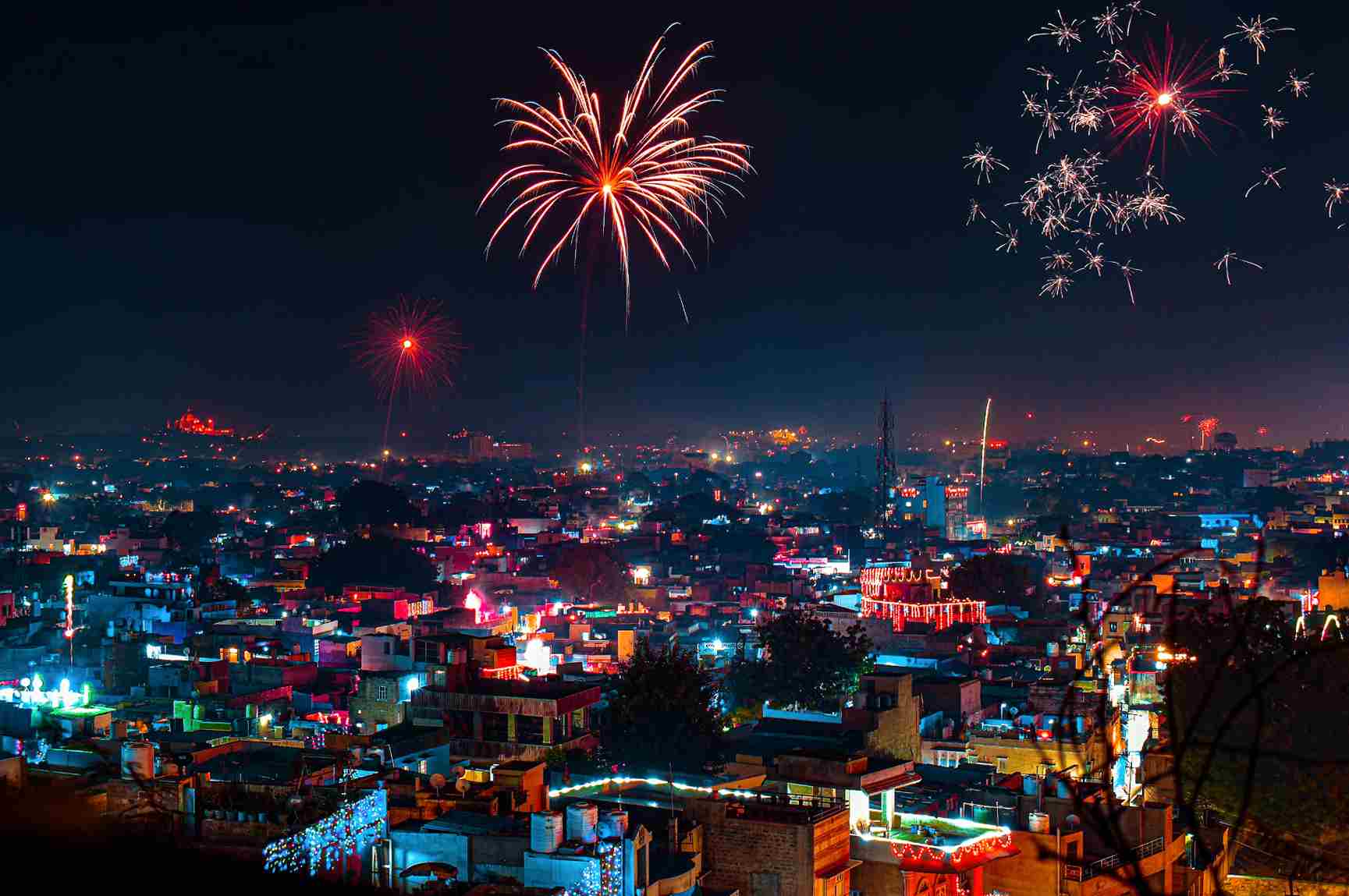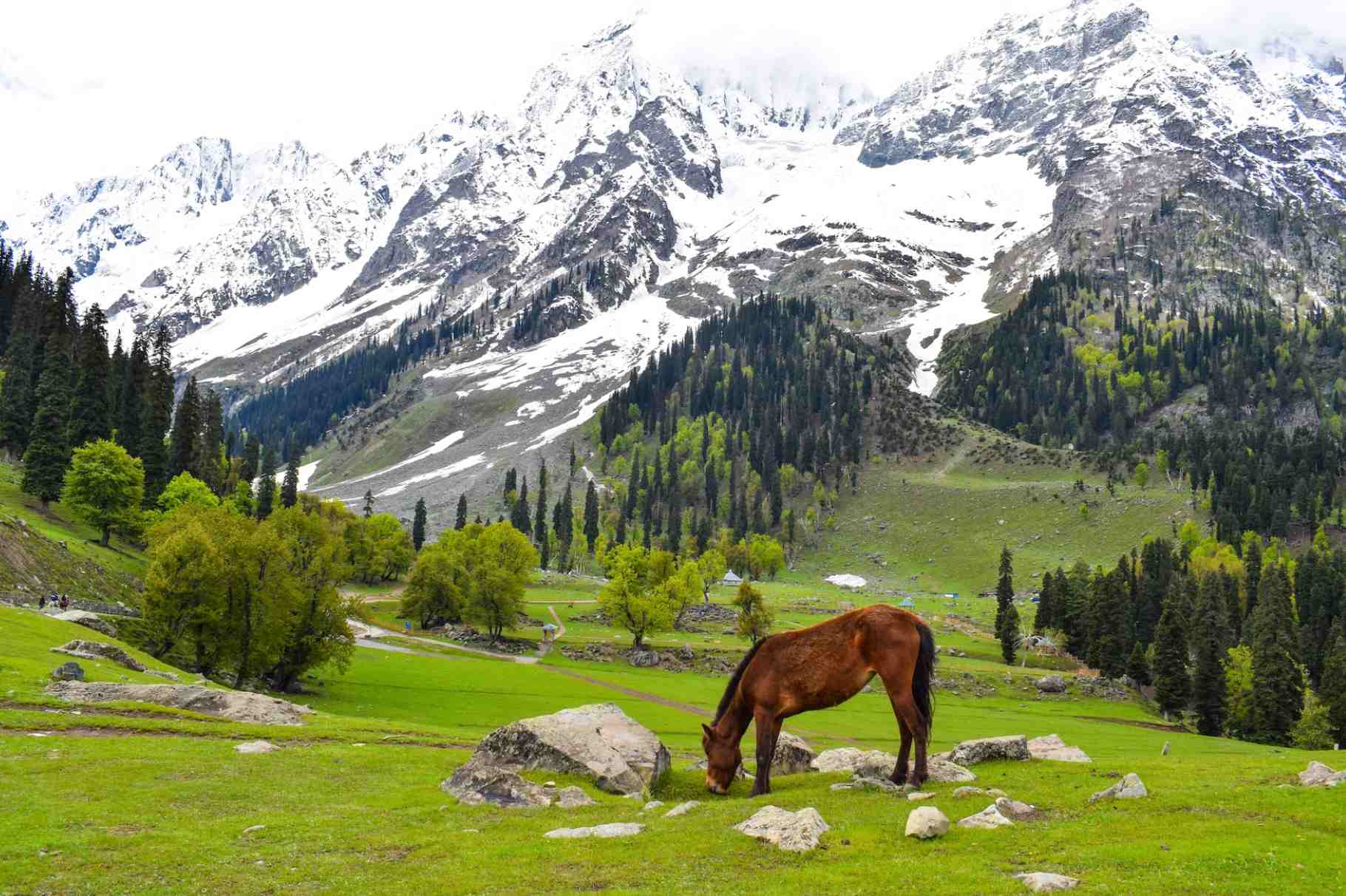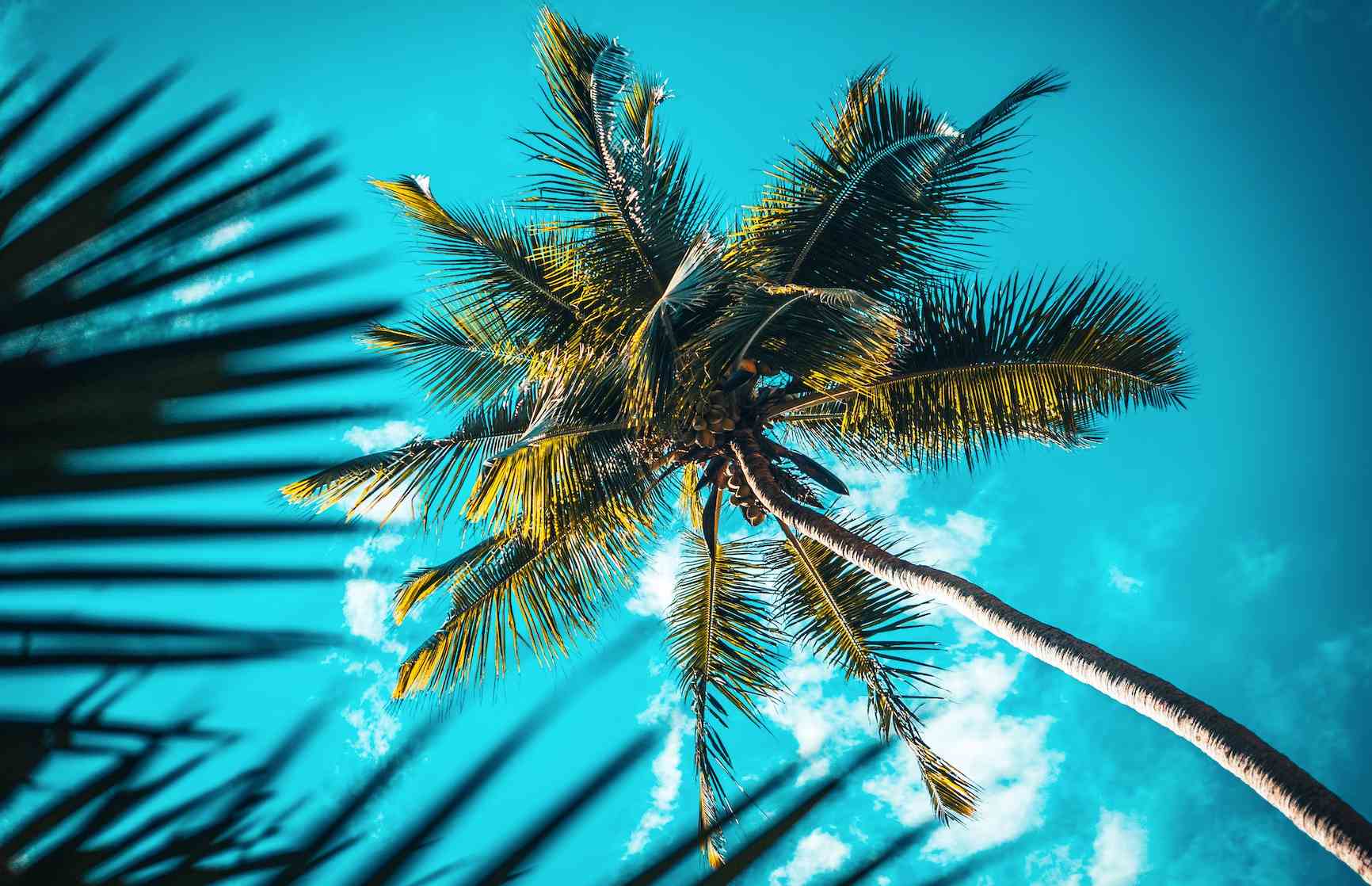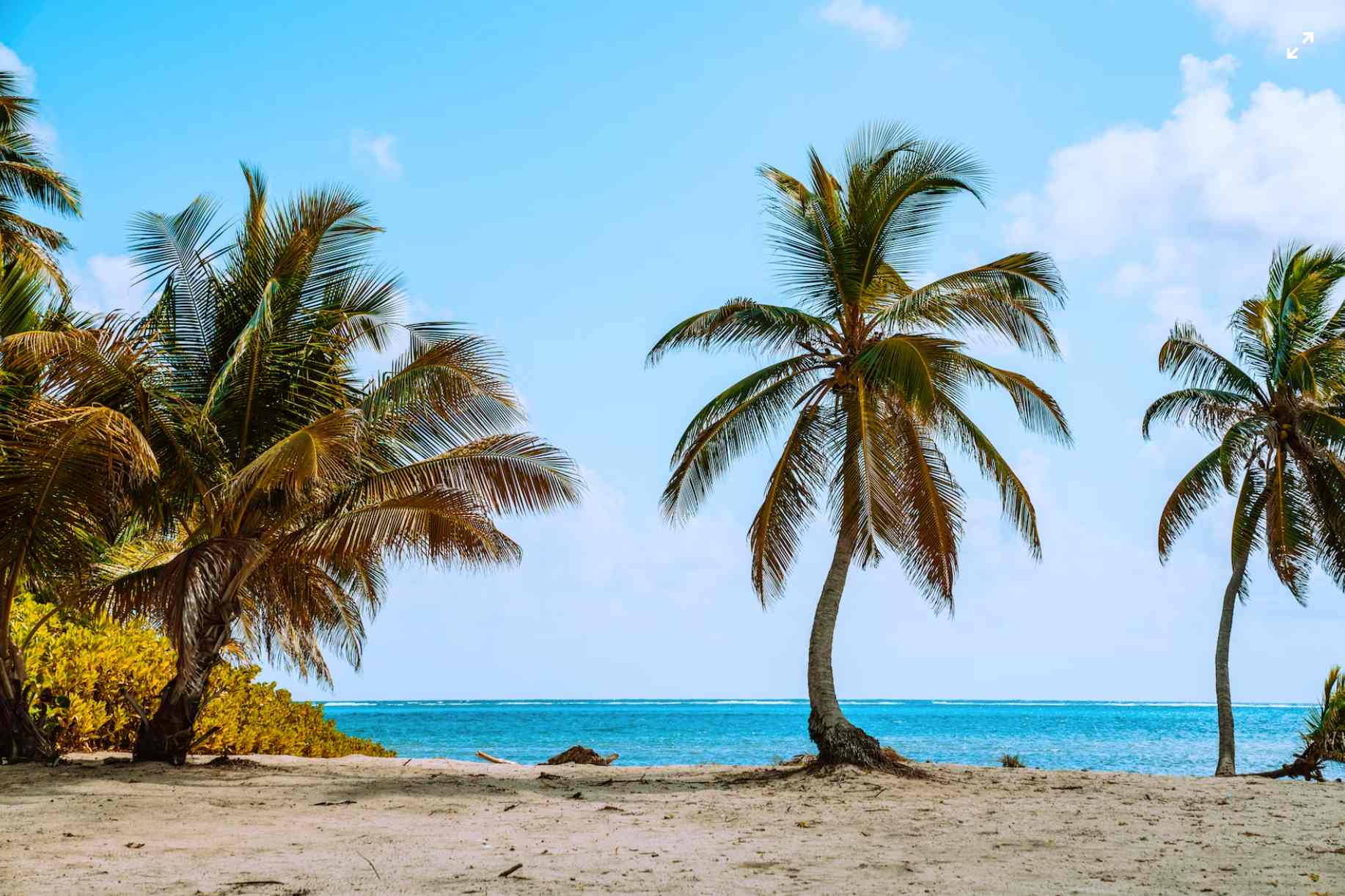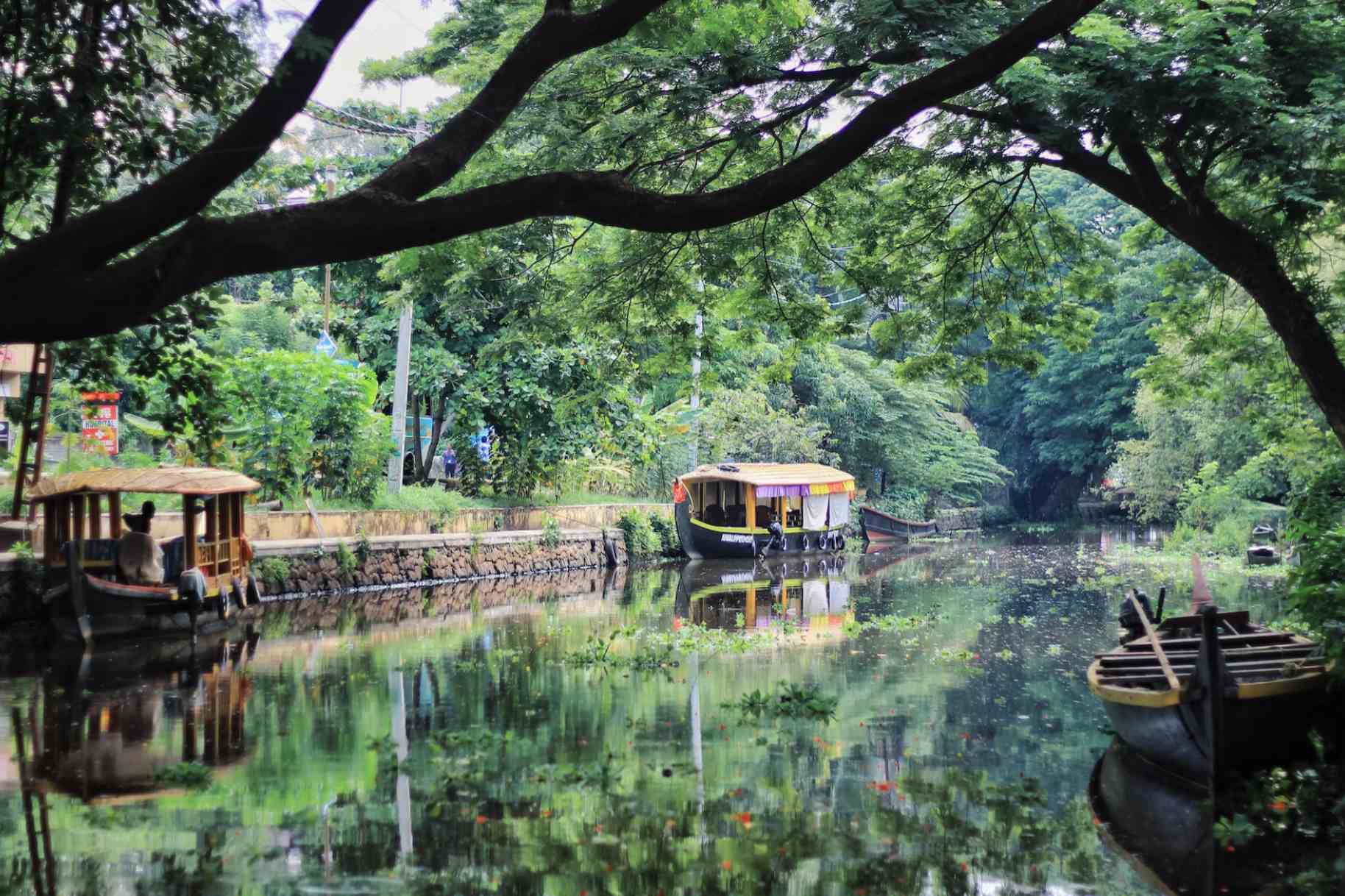Conquer the Great Indian Wilderness: 5 Most Challenging Treks in India
India is home to some of the most beautiful and challenging treks in the world. Here are a few of the most challenging treks in India:
1. Chadar Trek
The Chadar Trek, also known as the Frozen River Trek, is a famous and challenging winter trekking adventure in the Zanskar region of Ladakh, India. The name "Chadar" refers to the sheet of ice that forms over the frozen Zanskar River during the winter months. This trek offers a unique and exhilarating experience as participants walk on the frozen river, surrounded by stunning landscapes and icy cliffs.
Duration: The Chadar Trek typically takes around 9 to 10 days to complete, including acclimatisation and travel time. The trek covers a distance of approximately 65-70 kilometres (40-43 miles).
Difficulty Level: The Chadar Trek is considered one of the most challenging treks in India, suitable for experienced trekkers. The extreme temperatures, rugged terrain, and unpredictable weather conditions make it physically and mentally demanding. Proper preparation, fitness, and acclimatisation are crucial.
Best Time to Trek: The Chadar Trek is undertaken during the winter months, usually from January to February, when the Zanskar River freezes over and forms a thick layer of ice. This period offers the ideal conditions for walking on the frozen river.
Highlights:
Unique Experience: Walking on the frozen Zanskar River amidst the picturesque snow-covered landscapes and towering cliffs is a truly unforgettable experience.
Scenic Beauty: The trek showcases breathtaking views of the dramatic Zanskar Gorge, frozen waterfalls, and stunning ice formations.
Cultural Encounter: Along the way, trekkers get the opportunity to interact with the local Zanskari people, experiencing their culture and way of life.
Adventure and Challenge: The extreme cold, icy terrain, and ever-changing river conditions make the Chadar Trek a thrilling and challenging adventure.
Wildlife Sightings: While trekking, there are chances of spotting the elusive snow leopard and other Himalayan wildlife.
Permits and Guides: The Chadar Trek requires permits from the local authorities. It is highly recommended to undertake this trek with an experienced and licensed trekking agency that provides professional guides, equipment, and necessary support.
Preparation:
Physical Fitness: Prior fitness training and endurance exercises are essential to cope with the physical demands of the trek.
Cold Weather Gear: Proper clothing and gear suitable for extreme cold weather conditions, including insulated jackets, thermal layers, waterproof boots, and sleeping bags, are crucial.
Acclimatisation: Spend a few days in Leh, Ladakh, to acclimatise to the high altitude and thin air before starting the trek.
Mental Preparation: Be mentally prepared for the challenging conditions, long hours of walking, and potential changes in the itinerary due to weather conditions.
Safety Considerations: Safety is of utmost importance during the Chadar Trek. Trekkers must follow the instructions of the trekking guides, stay hydrated, and be aware of signs of altitude sickness. It is crucial to have adequate travel insurance that covers emergency evacuation.
The Chadar Trek is an adventure of a lifetime, providing an opportunity to witness the raw beauty of the Zanskar region and experience the thrill of walking on a frozen river. However, it is essential to plan and prepare thoroughly to ensure a safe and enjoyable trekking experience.
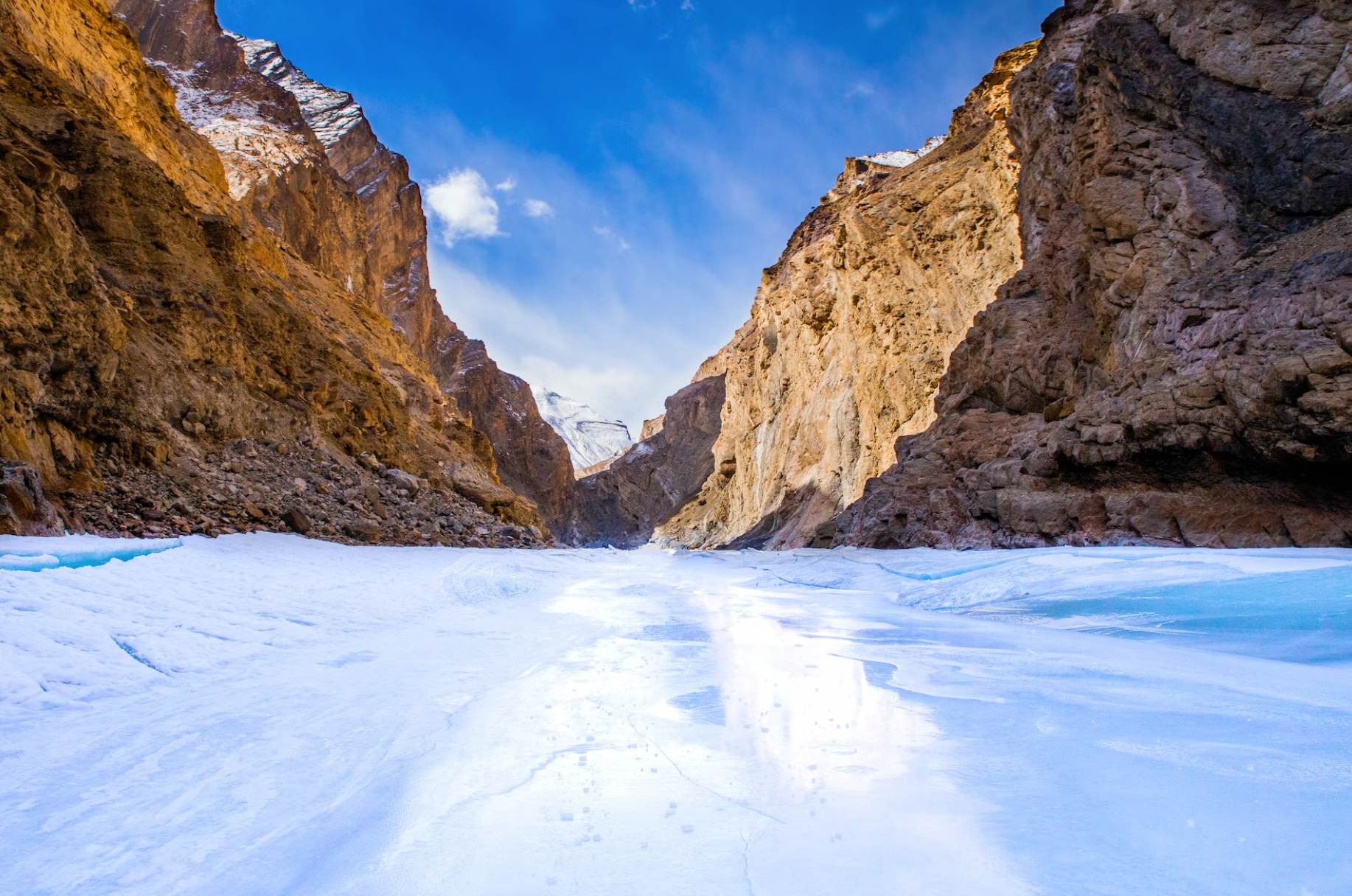
2. Stok Kangri Trek
The Stok Kangri Trek is a popular and challenging trekking expedition located in the Stok Range of the Himalayas, near Leh in Ladakh, India. Standing at an altitude of 6,153 meters (20,187 feet), Stok Kangri is the highest trekking peak in India and offers trekkers an exhilarating climbing experience and breathtaking panoramic views of the surrounding mountains.
Duration: The Stok Kangri Trek usually takes around 9 to 10 days to complete, including acclimatization and travel time. The actual trek duration is typically 5 to 6 days.
Difficulty Level: The Stok Kangri Trek is considered a challenging trek that requires a good level of physical fitness, endurance, and previous high-altitude trekking experience. The climb to the summit involves traversing steep and rocky terrain, enduring extreme weather conditions, and dealing with high altitude.
Best Time to Trek: The ideal time to undertake the Stok Kangri Trek is during the summer months, from mid-June to mid-September. This period offers better weather conditions with milder temperatures and clear skies, making it suitable for climbing and trekking.
Highlights:
Summit Climb: The main highlight of the Stok Kangri Trek is the opportunity to climb to the summit of Stok Kangri, which provides stunning views of the Himalayan range, including K2 and the Karakoram Range.
Scenic Beauty: The trek offers breathtaking views of the picturesque landscapes, rugged mountains, glacial valleys, and vast open meadows.
Cultural Exploration: The Stok Kangri Trek also provides an opportunity to interact with the local Ladakhi people and experience their rich culture and traditions.
Himalayan Wildlife: The region is home to various Himalayan wildlife, including ibex, blue sheep, marmots, and several bird species, offering chances for wildlife sightings during the trek.
Permits and Guides: Permits are required for the Stok Kangri Trek, and it is recommended to undertake the expedition with an experienced and licensed trekking agency that provides professional guides, equipment, and necessary support.
Preparation:
Physical Fitness: Prior physical training, including cardiovascular exercises and endurance training, is crucial to prepare the body for the demanding climb and high altitude.
Acclimatization: Spend a few days in Leh or nearby regions to acclimatize to the high altitude and thin air before starting the trek.
Climbing Gear: Proper climbing gear is essential, including trekking poles, crampons, ice axe, climbing harness, helmet, and sturdy mountaineering boots.
Cold Weather Gear: Pack appropriate clothing for cold weather conditions, including insulated jackets, thermal layers, gloves, and hats.
Safety Equipment: Carry essential safety equipment like a first aid kit, high-altitude sickness medication, and emergency communication devices.
Safety Considerations: Safety is paramount during the Stok Kangri Trek. Trekkers must follow the guidance of experienced guides, pay attention to signs of altitude sickness, stay hydrated, and maintain a steady pace during the ascent. Adequate travel insurance that covers emergency evacuation is highly recommended.
The Stok Kangri Trek offers a thrilling and challenging adventure for experienced trekkers and mountaineers. It provides an opportunity to push one's limits, conquer a significant peak, and immerse oneself in the stunning beauty of the Himalayas. However, it is crucial to be well-prepared, physically fit, and equipped with the right gear to ensure a safe and successful expedition.
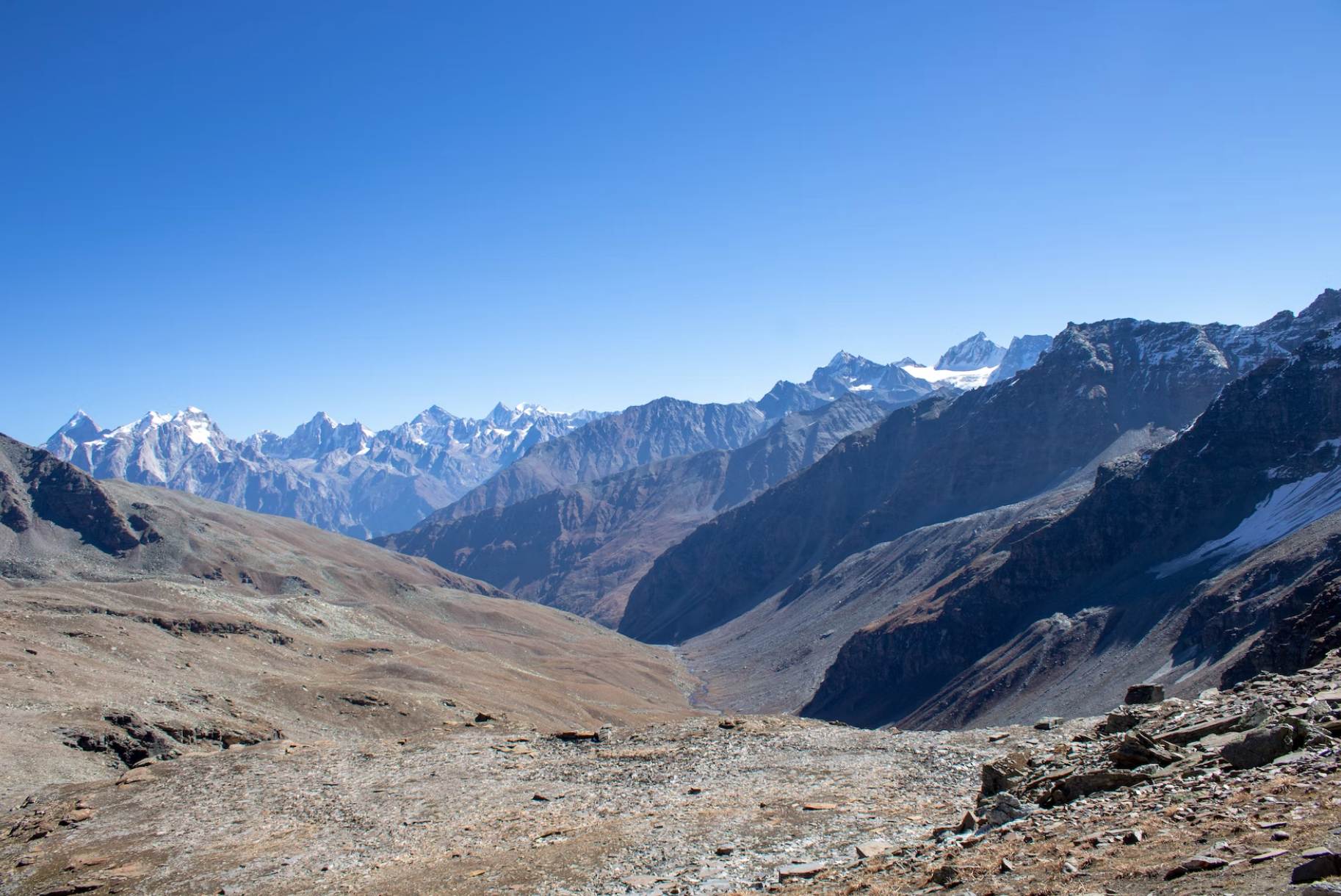
3. Roopkund Trek
The Roopkund Trek is a renowned and exhilarating high-altitude trek located in the Chamoli district of Uttarakhand, India. It is known for its mystical and historical significance, as well as its breathtaking landscapes. The highlight of the trek is the glacial Roopkund Lake, also known as the "Skeleton Lake," which is famous for the skeletal remains visible at its bottom.
Duration: The Roopkund Trek typically takes around 7 to 9 days to complete, including acclimatisation and travel time. The actual trekking duration is generally around 5 to 6 days.
Difficulty Level: The Roopkund Trek is considered moderately challenging. It involves trekking through varied terrains, including steep ascents, dense forests, rocky trails, and sections with snow or ice. A moderate level of physical fitness and some prior trekking experience are recommended.
Best Time to Trek: The ideal time to undertake the Roopkund Trek is during the summer months, from May to June and September to October. These periods offer favorable weather conditions, with clear skies and pleasant temperatures, making it suitable for trekking.
Highlights:
Roopkund Lake: The primary attraction of the trek is reaching Roopkund Lake, located at an altitude of approximately 4,800 meters (15,750 feet). The lake is famous for the human skeletal remains visible when the snow and ice melt. These remains are believed to be from a historical event, adding an element of mystery and intrigue to the trek.
Stunning Landscapes: The trek offers breathtaking views of snow-capped mountains, lush meadows, glistening streams, and alpine forests. The surrounding peaks, including Trishul and Nanda Ghunti, enhance the scenic beauty.
Bedni Bugyal and Ali Bugyal: These vast meadows along the trek route are captivating and offer panoramic views of the Himalayan ranges.
Glacial Streams and Waterfalls: The trek takes you across several glacial streams and stunning waterfalls, adding to the natural beauty and providing refreshing sights during the journey.
Flora and Fauna: The region is rich in alpine flora and fauna. Trekkers might encounter various species of flowers, birds, and even wildlife like Himalayan langurs, musk deer, or the elusive snow leopard.
Permits and Guides: Permits are required for the Roopkund Trek, and it is recommended to undertake the trek with an experienced trekking agency that provides professional guides, equipment, and necessary support. They can assist in obtaining the required permits.
Preparation:
Physical Fitness: Prior physical training, including cardiovascular exercises, endurance training, and hiking, is recommended to prepare for the trek's challenges.
Altitude Acclimatisation: Spend a few days in nearby towns like Lohajung or Kathgodam to acclimatise to the high altitude before starting the trek.
Trekking Gear: Carry appropriate trekking gear, including sturdy trekking shoes, layered clothing, rain gear, a backpack, and a sleeping bag suitable for cold temperatures.
Camping Equipment: Basic camping equipment like tents, sleeping mats, and cooking utensils may be required. These can be arranged through trekking agencies as well.
Safety Equipment: Carry a first aid kit, trekking poles, sunscreen, sunglasses, and a high-altitude sickness medication (under medical guidance).
Safety Considerations: Safety is paramount during the Roopkund Trek. Trekkers must stay hydrated, follow the guidance of experienced guides, be aware of signs of altitude sickness, and take precautions in challenging terrains. Adequate travel insurance that covers emergency evacuation is highly recommended.
The Roopkund Trek offers a remarkable blend of natural beauty, adventure, and historical intrigue. It provides an opportunity to explore a unique glacial lake and immerse oneself in the scenic grandeur of the Indian Himalayas. However, it is important to be well-prepared, physically fit, and equipped with the necessary gear to ensure a safe and fulfilling expedition.
4. Pin Parvati Trek
The Pin Parvati Trek is a challenging and adventurous high-altitude trek that traverses the stunning Pin Valley in Himachal Pradesh and the Parvati Valley in the Kullu district. This trek is known for its diverse landscapes, breathtaking views, and the thrill of crossing a high mountain pass.
Duration: The Pin Parvati Trek usually takes around 10 to 12 days to complete, including acclimatisation and travel time. The actual trek duration is typically 7 to 9 days.
Difficulty Level: The Pin Parvati Trek is considered a difficult and demanding trek suitable for experienced trekkers. It involves steep ascents, river crossings, boulder fields, and high-altitude sections. A good level of physical fitness, endurance, and prior high-altitude trekking experience is necessary.
Best Time to Trek: The ideal time to undertake the Pin Parvati Trek is during the summer months, from June to September. During this period, the weather is relatively stable, with milder temperatures, making it conducive for trekking.
Highlights:
Varied Landscapes: The trek offers a diverse range of landscapes, including lush green meadows, dense forests, snow-capped mountains, glacial valleys, and barren high-altitude terrain.
Parvati River and Pin River: The trek follows the Parvati River in the Kullu Valley and later crosses over to the Pin Valley, providing stunning views of these pristine rivers and their surrounding valleys.
Pin Parvati Pass: The highlight of the trek is crossing the Pin Parvati Pass, located at an altitude of 5,319 meters (17,451 feet). It offers breathtaking panoramic views of the surrounding peaks and a thrilling sense of achievement.
Culture and Traditions: The trek offers opportunities to interact with the local villagers and experience their unique culture, traditions, and rural way of life.
Flora and Fauna: The region is rich in alpine flora and fauna, including Himalayan flowers, rare herbs, and wildlife like Himalayan ibex, snow leopards, and blue sheep.
Permits and Guides: The Pin Parvati Trek requires permits, and it is highly recommended to undertake the trek with an experienced and licensed trekking agency. Professional guides, equipment, and necessary support are essential for a safe and successful trek.
Preparation:
Physical Fitness: Prior physical training, including cardiovascular exercises, endurance training, and hiking, is crucial to prepare for the trek's challenges.
Altitude Acclimatisation: Spend a few days in Manali or nearby regions to acclimatise to the high altitude before starting the trek.
Trekking Gear: Carry appropriate trekking gear, including sturdy trekking shoes, layered clothing, rain gear, a backpack, and a sleeping bag suitable for cold temperatures.
Camping Equipment: Basic camping equipment like tents, sleeping mats, and cooking utensils may be required. These can also be arranged through trekking agencies.
Safety Equipment: Carry a first aid kit, trekking poles, sunscreen, sunglasses, and a high-altitude sickness medication (under medical guidance).
Safety Considerations: Safety is paramount during the Pin Parvati Trek. Trekkers must be aware of signs of altitude sickness, stay hydrated, follow the guidance of experienced guides, and be prepared for changing weather conditions. Adequate travel insurance that covers emergency evacuation is highly recommended.
The Pin Parvati Trek offers a thrilling and rewarding experience, allowing trekkers to explore some of the most stunning landscapes in the Indian Himalayas. However, due to its difficulty level, it is important to be well-prepared, physically fit, and equipped with the right gear to ensure a safe and memorable expedition
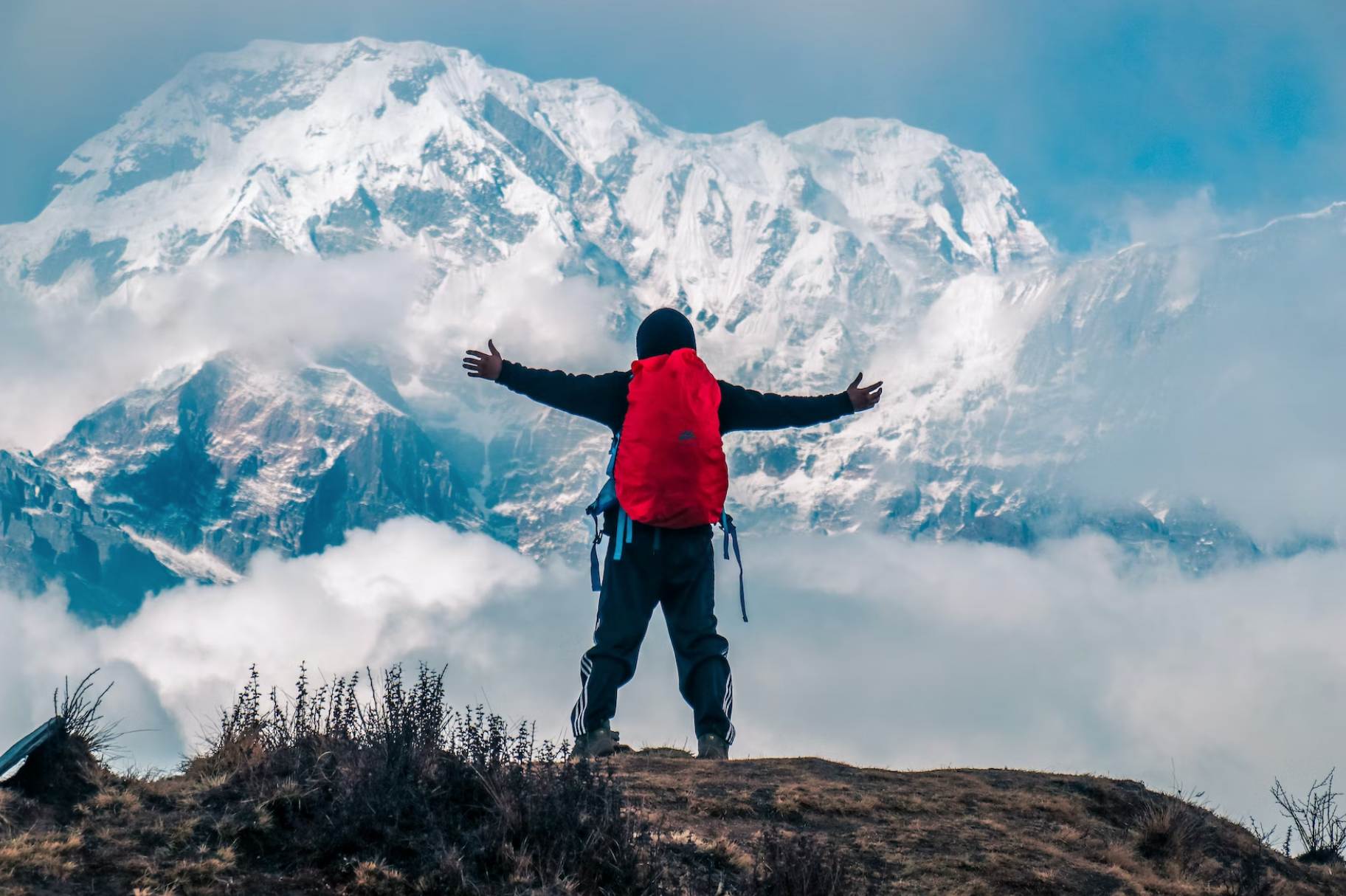
5. The Rupin Pass Trek
The Rupin Pass Trek is an exciting and challenging high-altitude trek located in the state of Himachal Pradesh, India. It is renowned for its stunning landscapes, diverse terrain, and panoramic views of the Himalayan ranges. The trek takes you through remote villages, dense forests, meadows, waterfalls, and eventually leads to the majestic Rupin Pass.
Duration: The Rupin Pass Trek typically takes around 7 to 8 days to complete, including acclimatisation and travel time. The actual trekking duration is usually around 5 to 6 days.
Difficulty Level: The Rupin Pass Trek is considered moderately difficult to challenging. It involves traversing steep ascents, narrow trails, snowfields, and a couple of river crossings. Prior trekking experience and a good level of physical fitness are recommended.
Best Time to Trek: The ideal time to undertake the Rupin Pass Trek is during the summer months, from mid-May to mid-June and September to October. During this period, the weather is relatively stable, with milder temperatures and clear skies, making it suitable for trekking.
Highlights:
Rupin Waterfall: The trek begins with a mesmerising view of the Rupin Waterfall, which cascades down from a height of approximately 300 metres (984 feet). The sight of the waterfall amidst the lush greenery is awe-inspiring.
Varied Landscapes: The trek offers a diverse range of landscapes, including dense forests of oak and pine, meadows adorned with wildflowers, barren rocky terrain, and snowfields as you approach the pass.
Rupin River: The trek follows the Rupin River throughout, and you will encounter several beautiful river crossings, adding to the adventure and natural beauty of the trek.
Rupin Pass: The highlight of the trek is reaching the Rupin Pass, situated at an elevation of approximately 4,650 meters (15,256 feet). Standing at the pass, you'll be rewarded with breathtaking panoramic views of snow-capped peaks and the surrounding valleys.
Local Villages and Culture: The trek allows you to interact with local villagers in the remote hamlets along the trail and experience their unique culture, traditions, and warm hospitality.
Permits and Guides: Permits are required for the Rupin Pass Trek, and it is recommended to undertake the trek with an experienced trekking agency. Professional guides, equipment, and necessary support ensure a safe and enjoyable experience. They can assist in obtaining the required permits.
Preparation:
Physical Fitness: Prior physical training, including cardiovascular exercises, endurance training, and hiking, is recommended to prepare for the trek's challenges.
Altitude Acclimatisation: Spend a few days in a nearby town like Shimla or Dehradun to acclimatise to the high altitude before starting the trek.
Trekking Gear: Carry appropriate trekking gear, including sturdy trekking shoes, layered clothing, rain gear, a backpack, and a sleeping bag suitable for cold temperatures.
Camping Equipment: Basic camping equipment like tents, sleeping mats, and cooking utensils may be required. These can be arranged through trekking agencies as well.
Safety Equipment: Carry a first aid kit, trekking poles, sunscreen, sunglasses, and a high-altitude sickness medication (under medical guidance).
Safety Considerations:
Safety is paramount during the Rupin Pass Trek. Trekkers must be aware of signs of altitude sickness, stay hydrated, follow the guidance of experienced guides, and take precautions in challenging terrains. Adequate travel insurance that covers emergency evacuation is highly recommended.
The Rupin Pass Trek offers an unforgettable adventure, allowing trekkers to explore some of the most picturesque landscapes in the Indian Himalayas. However, it is important to be well-prepared, physically fit, and equipped with the right gear to ensure a safe and memorable expedition.
P.S : Always remember to leave no trace while you travel and choose eco-friendly stay options.
Disclaimer: All images used on this blog are believed to be in the public domain or have been labeled for reuse with modification. However, if any image is mistakenly posted without proper credit or permission, please contact us immediately and the image will be removed or credit will be provided to the rightful owner.











